A recent BBC article about the “Witches of Bucha”—a Ukrainian volunteer air defense unit primarily composed of women—brought to mind fierce female warriors from history and legend: Queen Boudica of the ancient British Iceni tribe, the shield-maidens of Scandinavian sagas, and the “Onna-musha” of feudal Japan, to name a few. The more I learned about these courageous women defending Ukraine, the more I began to see them as modern-day Amazons, echoing the legendary female warriors of Greek mythology.
Depicted as fearless and skilled fighters in ancient texts and art, the Amazons challenged traditional gender roles and have long sparked scholarly debate about power, femininity, and the role of women in warfare. But who were the Amazons? Were they purely mythical, or did real women inspire their legend?
Let’s delve into the rich narrative of the Amazons in Greek mythology, examine archaeological evidence of real female warriors, and explore how both history and myth shaped ancient Greek society’s perceptions of women, war, and power.
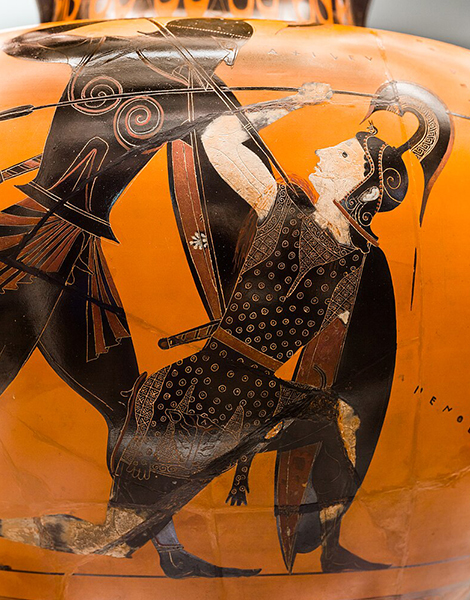
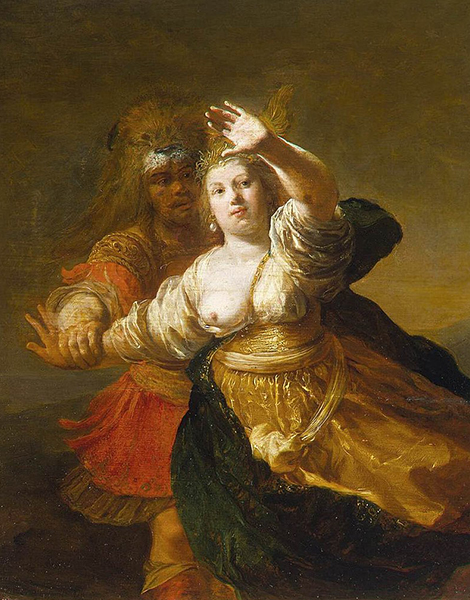
The Origins and Mythology of the Amazons
The Amazons, fearsome daughters of Ares, the Olympian god of war, are among the most enigmatic figures in Greek mythology. Shrouded in mystery and intrigue, they were said to inhabit distant lands far beyond the edge of the “civilized world,” in the Pontic-Caspian steppe of Scythia and Sarmatia, north of the Black and Caspian Seas—regions known for their nomadic warrior cultures. The Amazons were often depicted as living in all-female societies where men were kept solely for procreation, with daughters raised as warriors and sons sent away. This mythical society stood in stark contrast to the patriarchal world of ancient Greece, where women’s roles were largely confined to the domestic sphere.
The Greek historian and geographer Herodotus (c. 484-c. 425 BC) famously blurred the line between myth and reality, describing the Amazons as an actual nomadic tribe in Pontus, on the southern coast of the Black Sea. In the hands of epic poets and artists, the legend of these fierce warrior women flourished.
Penthesilea, one of their most celebrated queens, marched into battle during the Trojan War, siding with the Trojans. Her story, as told in the now lost epic “Aethiopis” (probably by Arctinus of Miletus, 6th century BC), reaches its tragic peak when she faces the greatest of the Greek heroes, Achilles. In an epic moment of drama and “pathos,” Achilles slays her in combat, only to be overwhelmed by her beauty as he gazes upon her lifeless body. This mixture of admiration and sorrow was immortalized in one of the most iconic works of ancient art: an Attic black-figure vase painted by the master Exekias (c. 540 BC), now displayed at the British Museum in London.
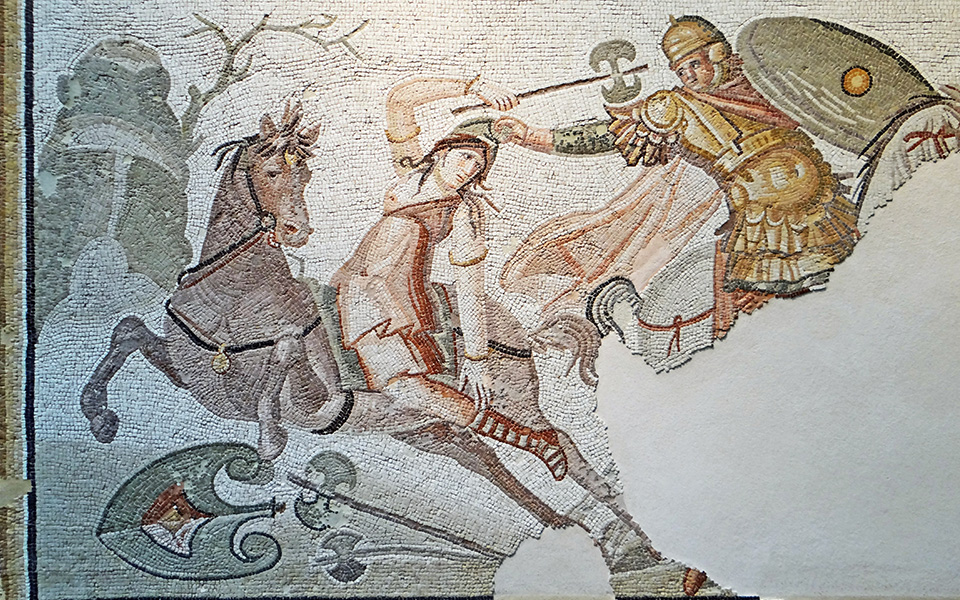
But Penthesilea wasn’t the only Amazon queen to leave her mark on Greek mythology. Hippolyta, another renowned Amazon, possessed a girdle that was coveted by the divine hero Heracles. According to the myth, obtaining this girdle was the ninth of Heracles’ Twelve Labors, and the quest brought him face to face with the fierce Amazon queen. The tale reflects the Greeks’ awe—and fear—of these warrior women, whose strength and defiance challenged the very fabric of their patriarchal world.
The Amazons’ origins as daughters of Ares were no accident; their fierceness and martial prowess were as divine as they were terrifying. One persistent myth about them is that they removed one of their breasts to improve their archery skills. The name “Amazon” itself was thought to come from “a-mazos,” meaning “without a breast” in Greek, though this etymology is widely debated. This myth likely persisted because it reinforced the idea of Amazons as otherworldly, violating traditional norms of femininity to excel in war.
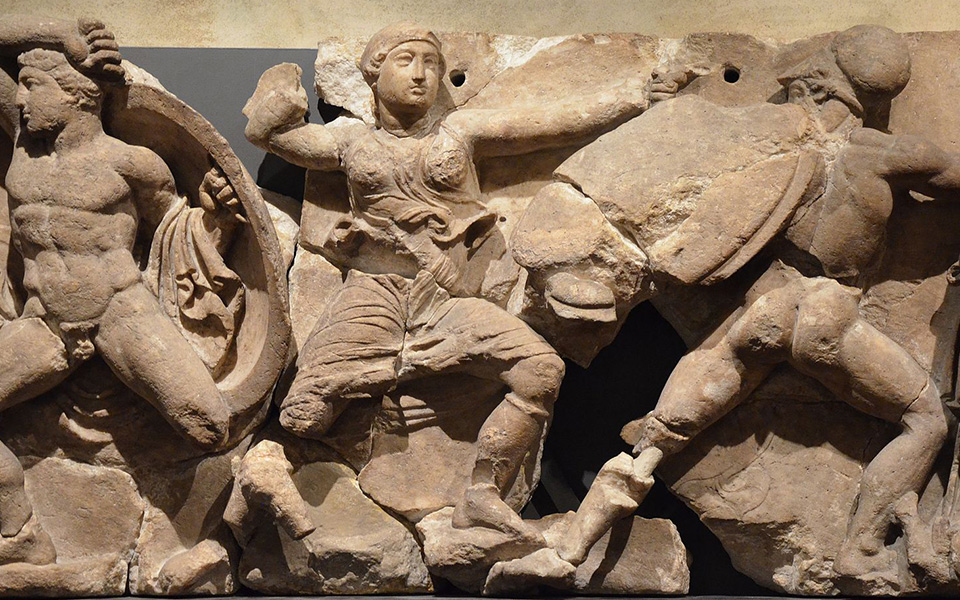
The Iconography of Amazons in Greek Art
The Amazons were not just celebrated in Greek literature; they became a popular and recurring theme in Greek art, where their image came to symbolize the clash between two worlds: the orderly Greek civilization and the so-called “barbarian” cultures beyond its borders. Among the most striking artistic motifs was the “Amazonomachy”—dramatic depictions of battles between Amazons and Greek heroes, which adorned pottery, sculpture, and monumental architecture. These dynamic scenes, rich with movement and conflict, symbolized more than just combat; they reflected the Greek worldview, where the struggle between order and chaos played out on a grand, visual scale.
For those visiting Greece today, some of the most iconic examples of Amazonian imagery can still be seen at key cultural sites. The Parthenon, the majestic temple that crowns the Acropolis, features scenes of the Amazonomachy on its west metopes – nine of which remain in their original position on the monument, while four (nos. 1, 2, 13, 14) are exhibited in the Acropolis Museum. The Athenian treasury at Delphi, the temple of Hephaestus at Athens, the temple of Zeus at Olympia, and the temple of Apollo at Bassae, also include powerful depictions of these warrior women locked in fierce battle.
These motifs also appear in Greek pottery displayed at the National Archaeological Museum in Athens, where vases dating back to the 6th and 5th centuries BC reveal Amazons engaging Greek warriors. Interestingly, by the 5th century BC, artists began to portray Amazons wearing Persian attire, blending myth with contemporary fears as the Greco-Persian Wars unfolded.
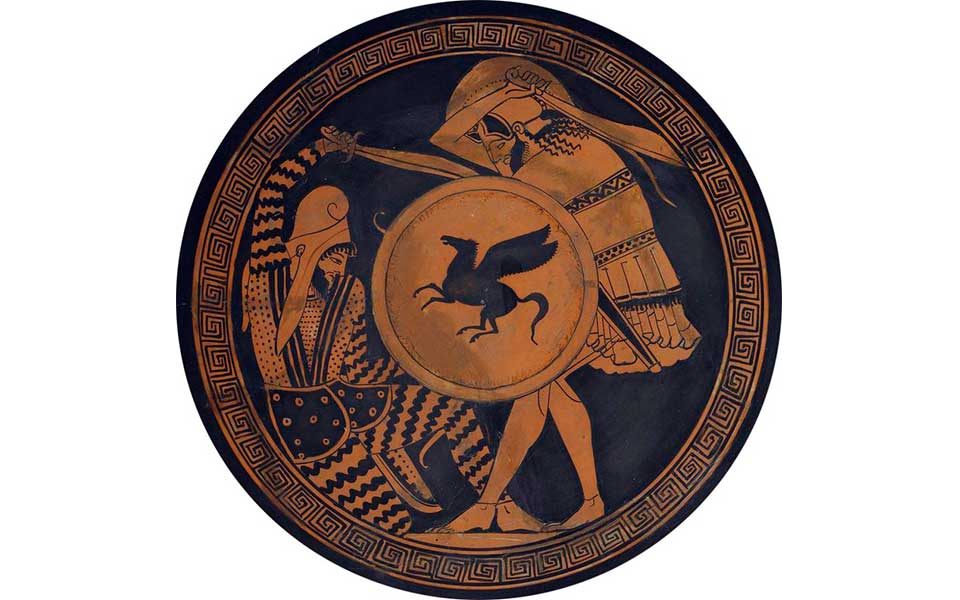
The Amazon Myth and the Greco-Persian Wars
As tensions between Greece and Persia escalated in the 5th century BC, the legend of the Amazons took on an even more profound significance. No longer merely mythical opponents, the Amazons became symbolic stand-ins for the Persian Achaemenid empire—a foreign power threatening the very heart of Greek – and, by extension, Western – civilization. The Amazonomachy, once a depiction of legendary battles, was repurposed to reflect the struggles of the Greco-Persian Wars (499-449 BC). Just as the Amazons had represented a foreign, fearsome “other” in myth, they now mirrored the real-world invaders from the East, led by Darius I and Xerxes.
Public monuments and art featuring these Amazon battles served as powerful propaganda, commemorating Greek victories over foreign invaders and, at the same time, reinforcing the gender order of the day. Female warriors were depicted as both courageous and threatening—an alluring yet unsettling presence that had to be overcome to restore balance to the world. In a society where women were largely relegated to domestic life, the Amazon myth stood as a potent symbol of both fascination and fear, a reminder that the line between civilization and chaos was always at risk of being crossed.
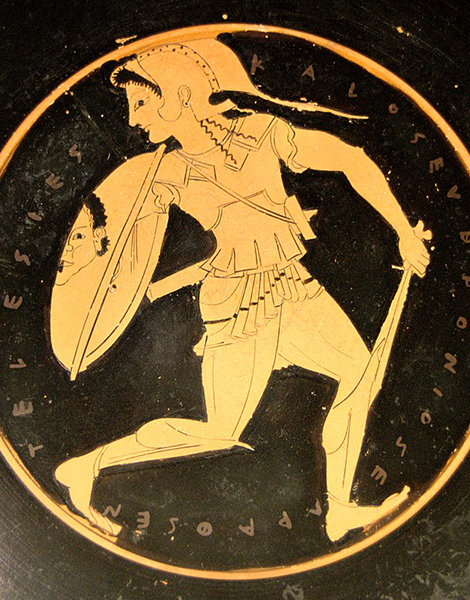
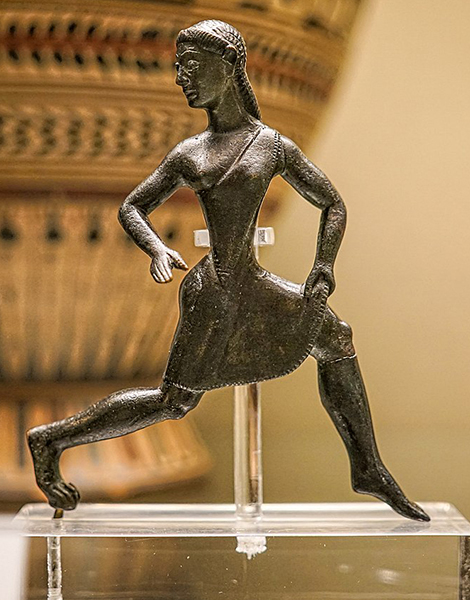
Real Warrior Women: The Archaeological Evidence
Were the Amazons purely the product of Greek myth, or could there have been real-life counterparts that inspired these legendary warriors? Archaeological discoveries in recent years suggest that the idea of female warriors may not have been entirely imaginary. Excavations in the Eurasian steppe, particularly in regions once inhabited by the Scythians and Sarmatians (the latter in modern-day Kazakhstan), have uncovered graves of women buried with weapons, armor, and evidence of battle wounds. These discoveries lend credence to the notion that stories of warrior women were grounded, at least in part, in historical reality.
One particularly remarkable burial mound (kurgan) near ancient Tyras, on the northern coast of the Black Sea, dating to the 4th century BC, revealed the remains of a woman with a deep battle-axe wound to her skull and an arrowhead lodged in her knee. She was laid to rest with iron spears, bronze arrowheads, and a suit of body armor, clear markers of her status as a warrior. This is not an isolated case. In fact, skeletal analysis of over 1,000 graves from nomadic cultures in the steppe region has shown that approximately 37% of the women were buried with weapons, many of them also displaying signs of combat injuries. This suggests that real warrior women existed in these societies, living and dying by the sword—perhaps the very figures who inspired the Greek legends of the Amazons.
In Athens itself, there are even accounts of Amazon graves located within the city, giving the myth an even deeper connection to the real world. Greek writers such as Plutarch and Pausanias describe burial sites attributed to the Amazons, remnants of their supposed campaign against Athens. As the historian Plutarch (c. AD 46 – after AD 119) writes in his Life of Theseus, “… the fact that [the Amazons] encamped virtually within the city is supported both by place names and by the graves of the fallen.” According to these accounts, the Amazons fought fiercely, and many were buried in an area known as the Amazoneion, near the Areopagus and ancient Agora. Writing in the 2nd century AD, Greek traveler and geographer Pausanias even identified the grave of Theseus’ wife, believed to be Antiope or Hippolyta, near the Sanctuary of Gaia, further cementing the Amazons’ place in the Athenian historical landscape.
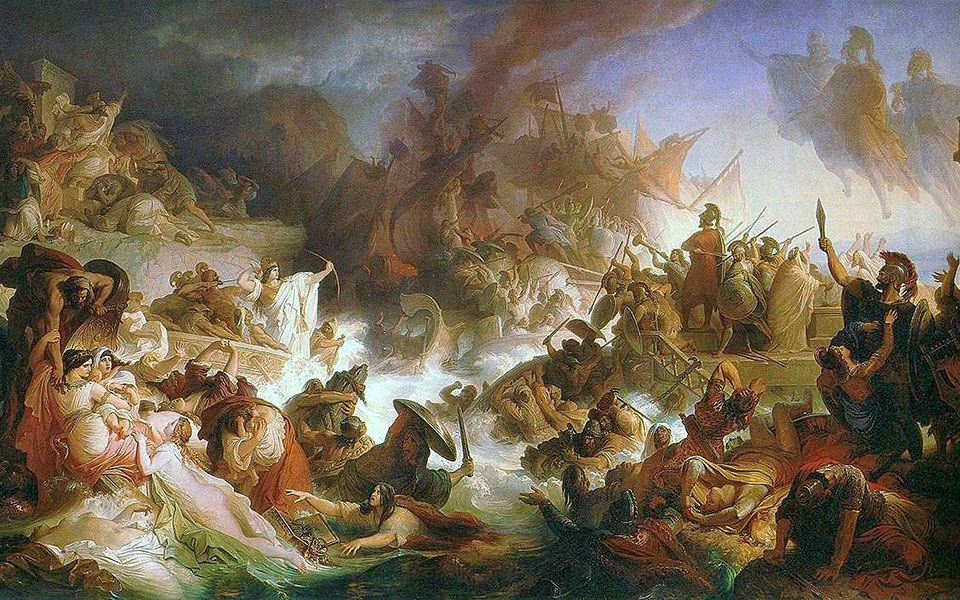
The Role of Women in Greek Warfare and Society
While the Amazons represent an extreme vision of women in warfare, real women in ancient Greece were largely confined to domestic roles. In Athens, women had little political or military power. However, in Sparta, women enjoyed greater freedom and physical training, as the state believed that strong women would produce strong warriors.
The goddess Athena embodied a unique ideal of womanhood. As the virgin goddess of war and wisdom, she transcended traditional gender roles, representing a woman who possessed all the martial attributes of men while remaining deeply embedded in the patriarchal system.
While the Amazons themselves belonged to the realm of Greek myth, real women did, in fact, take to the battlefield in antiquity. One such figure is Queen Artemisia of Caria, a historical leader who, despite her Greek ethnicity, fought alongside the Persians during their invasion of Greece in 480 BC. According to Herodotus, Artemisia distinguished herself at the naval Battle of Salamis, where she not only demonstrated tactical brilliance but also earned the respect of Xerxes himself for her strategic insights.
Myth and Reality Intertwined
The Amazons of Greek mythology continue to fascinate as symbols of female strength, independence, and defiance of traditional gender roles. While they may have been mythologized as a threat to Greek civilization, archaeology suggests that real women warriors did exist on the fringes of the Greek world, inspiring the stories that continue to capture our imagination today.
Like the defiant Boudica of ancient Britain and the courageous “Witches of Bucha” in the current war in Ukraine, the Amazons remind us that women have always had the power to take up arms and shape the course of history.












